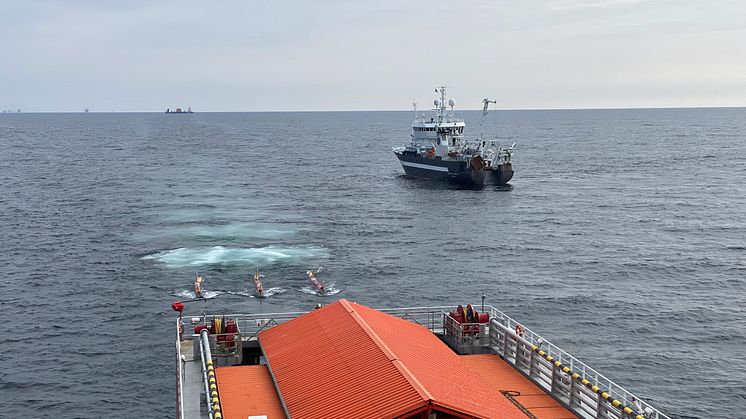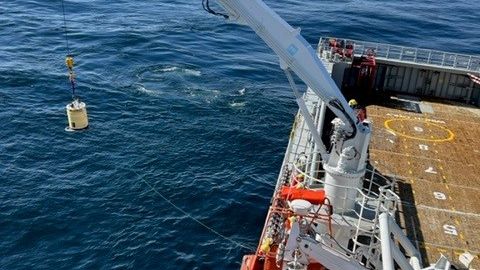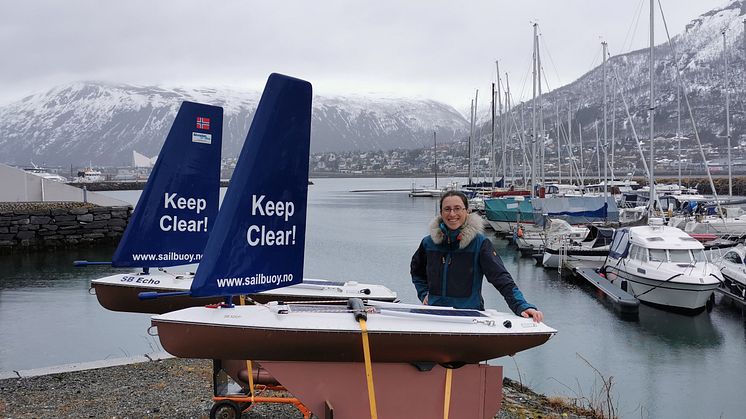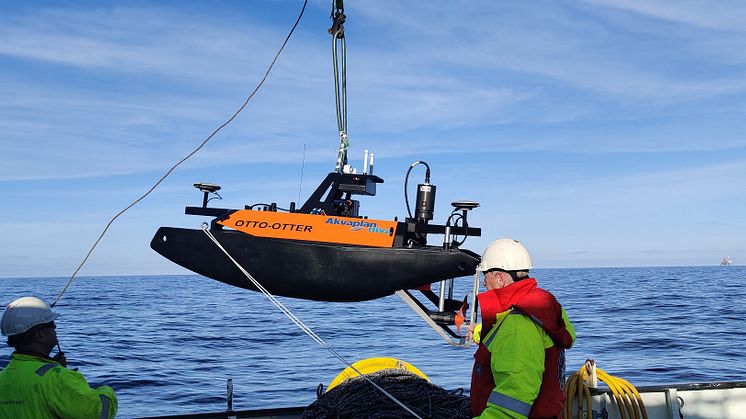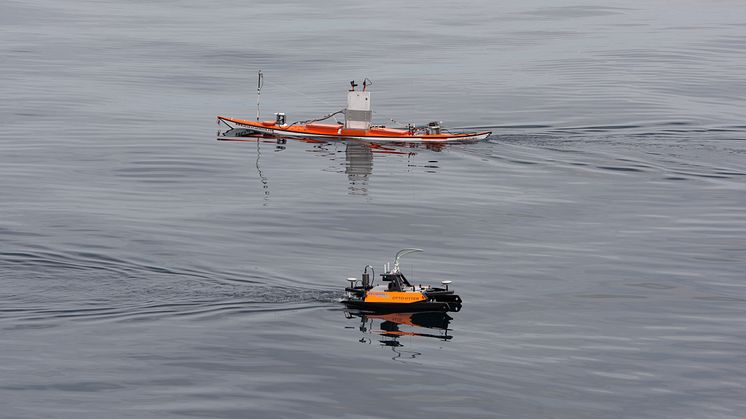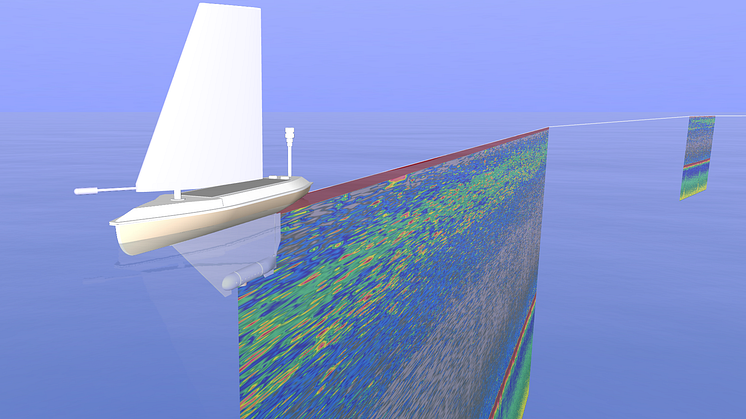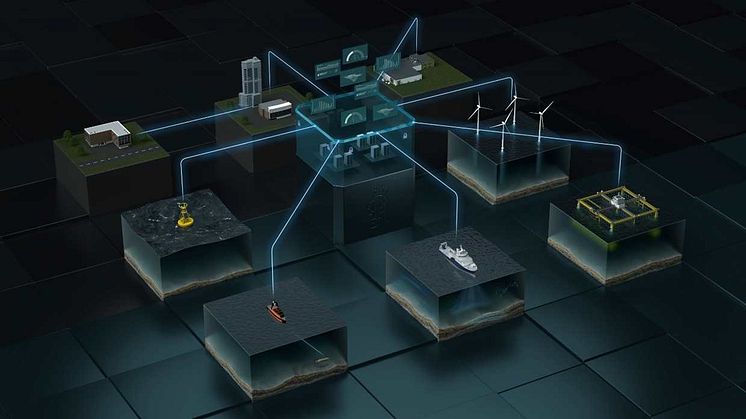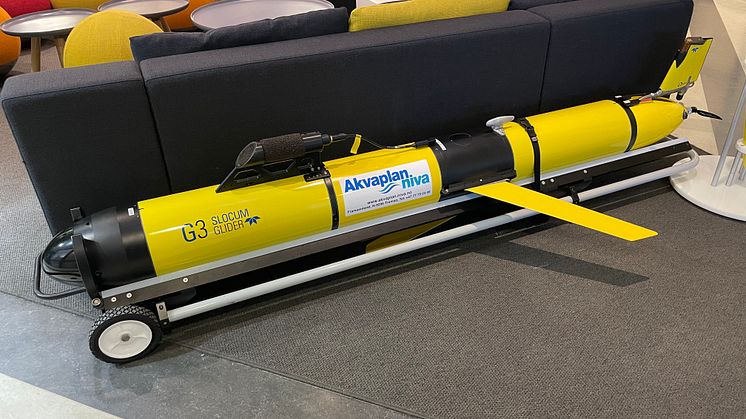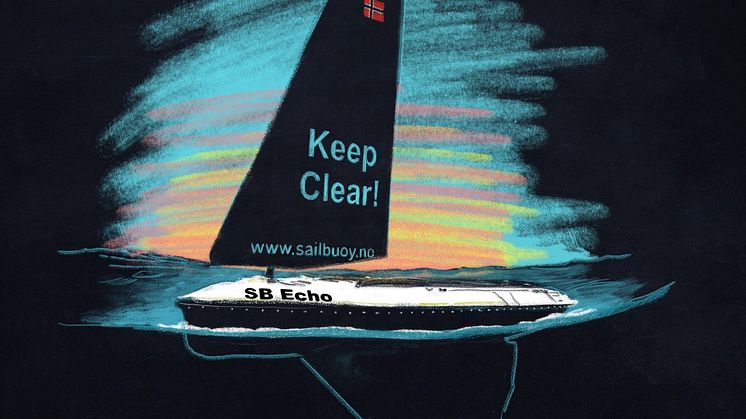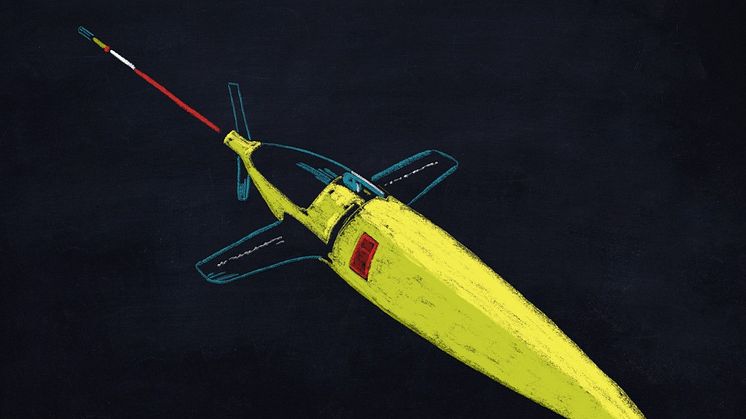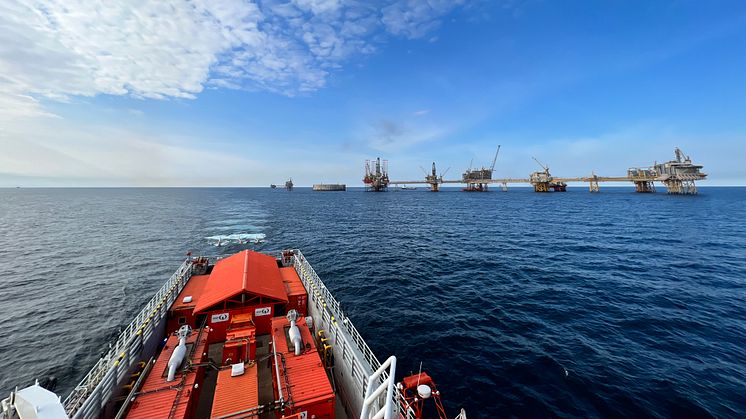
Nyhet -
Multiple technologies in North Sea environmental research
Akvaplan-niva has been leading a mission to collect environmental data near the offshore facilities in the Greater Ekofisk Area, in the North Sea. The mission was part of the Glider II project financed by ConocoPhillips Scandinavia AS. This was a complex collaboration effort between the industry, ConocoPhillips Scandinavia AS and its subcontractor Magseis Fairfield, Akvaplan-niva and the Norwegian Institute of Marine Research (IMR). IMR was invited to participate to the data collection in the framework of their Research Council of Norway supported project ZoopSeis, aimed at studying possible impact of seismic activity on zooplankton.
In order to observe the Ekofisk marine ecosystem, Akvaplan-niva deployed the following unmanned vehicles:
- Slocum G3 glider with a hydrophone to monitor sound propagation at different distances from the source (the seismic vessel) with particular focus on the haddock spawning sites located north of the field
- JASCO Applied Sciences lander with a hydrophone, to monitor marine sound during a whole year cycle, including the periods of seismic activity
- Sailbuoy with echosounder to monitor large scale fish and plankton behaviour and distribution in the seismic field before, during and after the seismic shooting
- Otter with echosounder, to monitor local zooplankton behaviour on the tail of the seismic field as the seismic vessel passes, in collaboration with IMR's experimental sampling
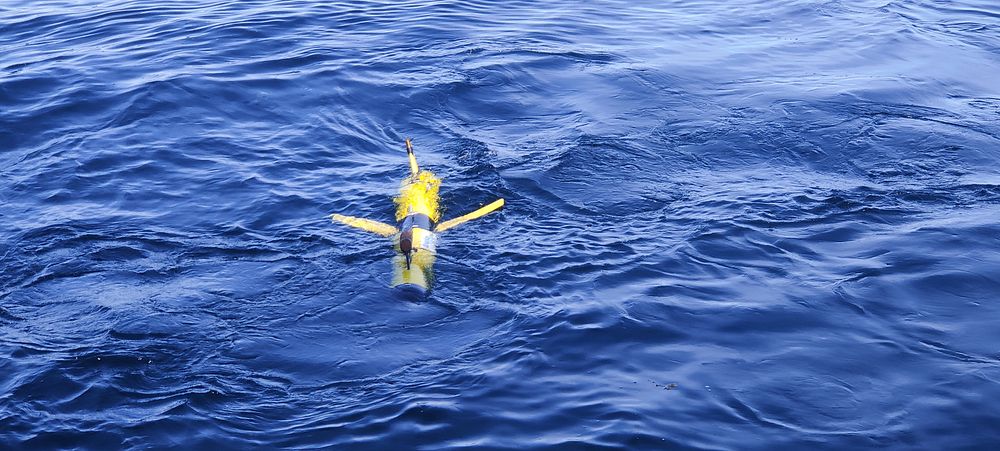
Slocum G3 glider (Photo: Håvard Johnsen Buschmann/Akvaplan-niva).
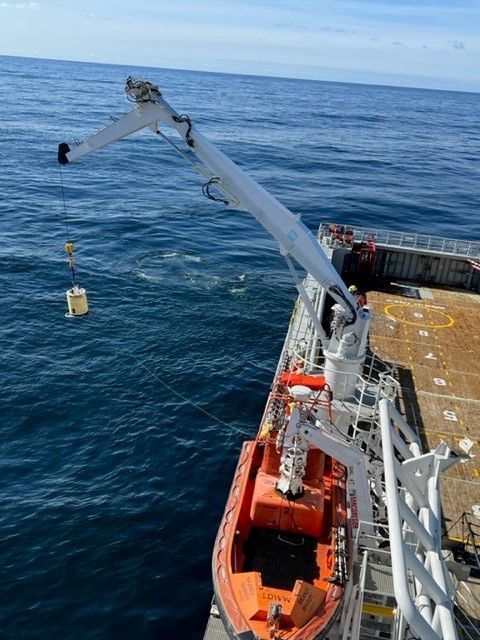
Deployment of the JASCO lander equipped with hydrophone (Photo: Magseis Fairfield).
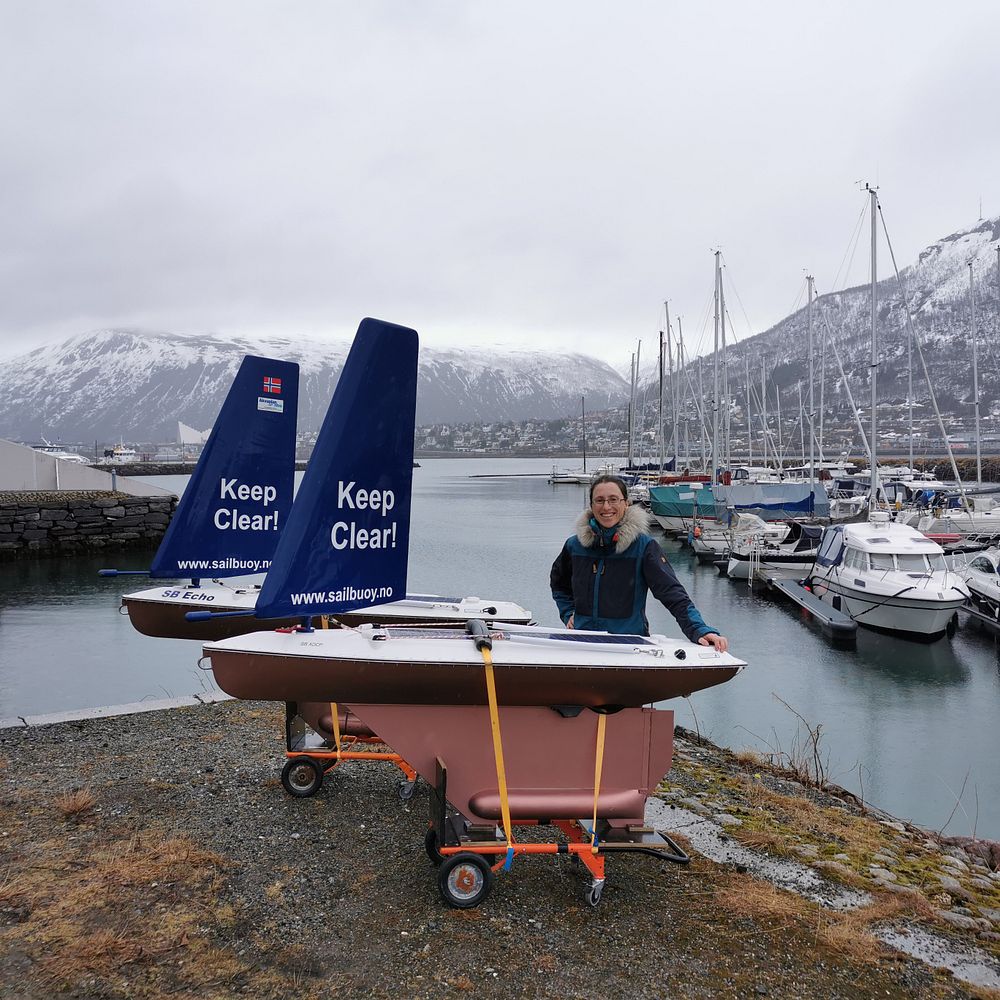
Scientist Virginie Ramasco (Akvaplan-niva) with Sailbuoy (Photo: Akvaplan-niva).
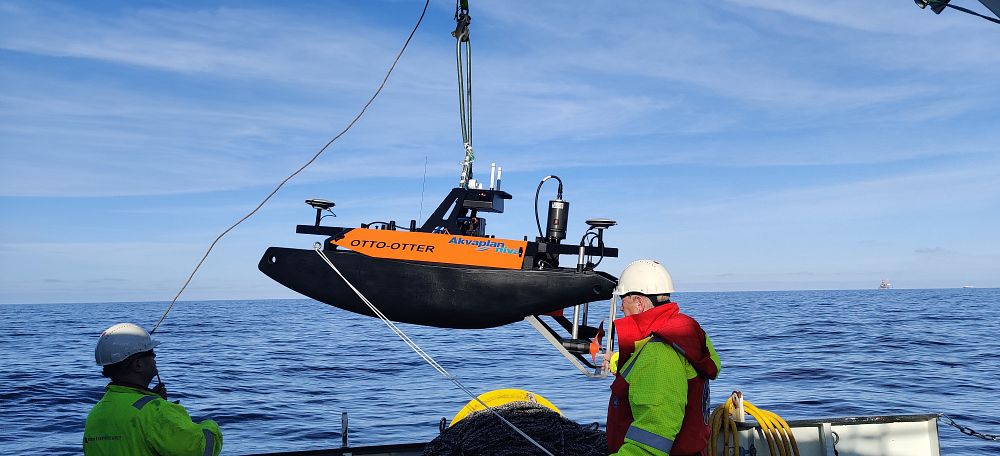
Deployment of Otter equipped with echosounder from RV Kristine Bonnevie (Photo: Håvard Johnsen Buschmann/Akvaplan-niva).
IMR deployed landers with upward looking echosounders at three stations and their research vessel R/V Kristine Bonnevie sampled zooplankton on-site to study possible mortality and other potential effect of the seismic activity.
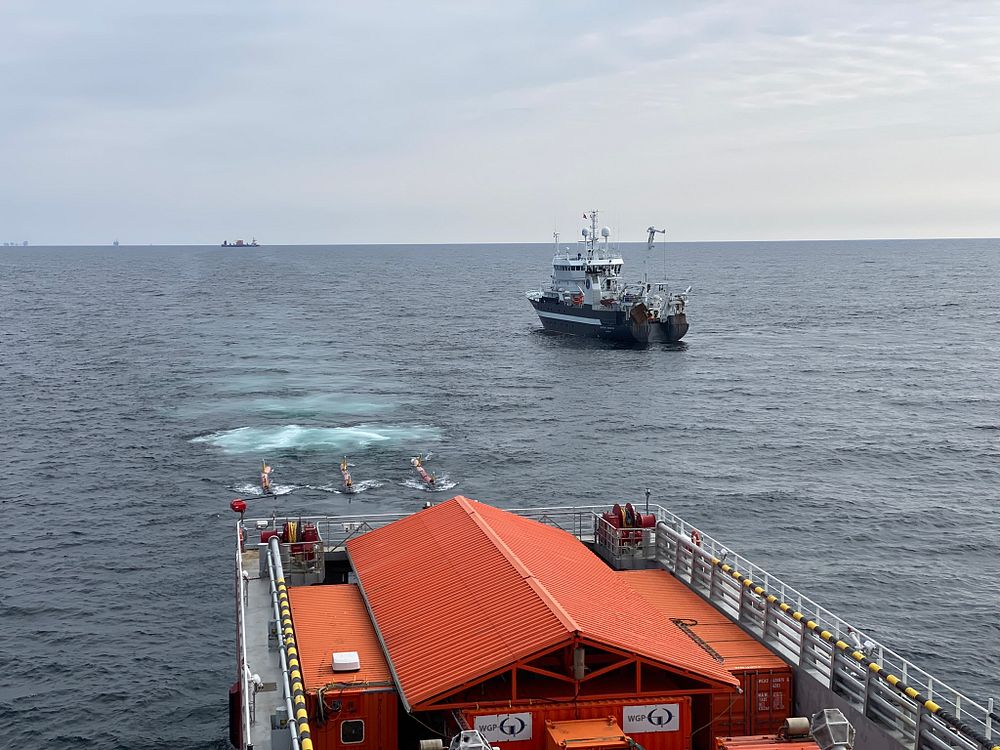
A close passing between the Skandi Nova shooting seismic and IMR R/V Kristine Bonnevie (Photo: Magseis Fairfield).
The collaboration between Akvaplan-niva and IMR has allowed for combining remotely sampled data from our unmanned platforms, with in-situ net samples from IMR's vessel, creating an unique possibility for an in depth understanding of the impact of seismic activity on the marine fauna.
The collection of environmental data was carried out during April and May 2022 and during August and September 2022. A final campaign is planned for spring 2023. The JASCO Lander will stay on the sea floor for a full year.
The scientists of Akvaplan-niva and IMR has started analysing the collected information, and this work will continue through 2022 and 2023.
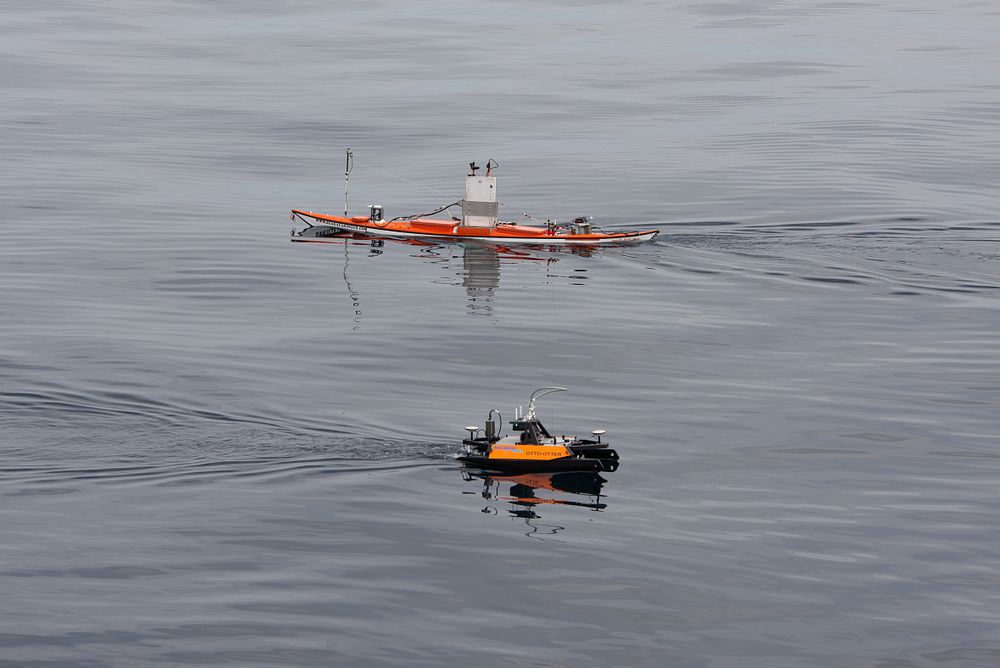
The Akvaplan-niva Otter and the IMR Kayak drone, both equipped with scientific echosounders, performing repeated acoustic transects monitoring potential changes in vertical and horizontal distribution of zooplankton layers (Photo: Geir Pedersen/IMR).
More about the technology in use:
Sailboy: remotely operated surface vehicle propelled by wind and solar energy. Producer: Offshore Sensing, Norge.
Slocum G3: buoyancy and propeller driven autonomous underwater glider produced by Teledyne in USA.
JASCO C-Lander: a subsea mooring for long term acoustic logging, produced by JASCO Applied Sciences Ltd in Canada.
Otter: all electric, unmanned surface vehicle produced by Maritime Robotics in Norway
